Abstract
Reinforcement process may underlie decisions frequently found in organizations to escalate investments of time, money and other resources in strategies (e.g., product development, capital investment, plant expansion) that do not result in immediate reinforces. Whereas cognitive biases have been proffered in previous explanations, the present analysis suggested that this persistence is a form of resistance to extinction arising from experiences with past investments that were variably reinforced. This explanation was examined in two experiments by varying the pattern of returns and losses subjects experienced for investment decisions prior to experiencing a series losses. Consistent with the proposed explanation, two conditions resulted in higher levels of recommitment during continuous losses: (a) training using a variable schedule of partial reinforcement, and (b) no training on the task. Results indicate that behavior analysis can be used to understand and control situations in organizations that are prone to escalation, such as investments in the research and development of new product lines and extensions of further loans to customers.
Keywords: behavior analysis, business problems, extinction, generalization, schedules of reinforcement
Full text
PDF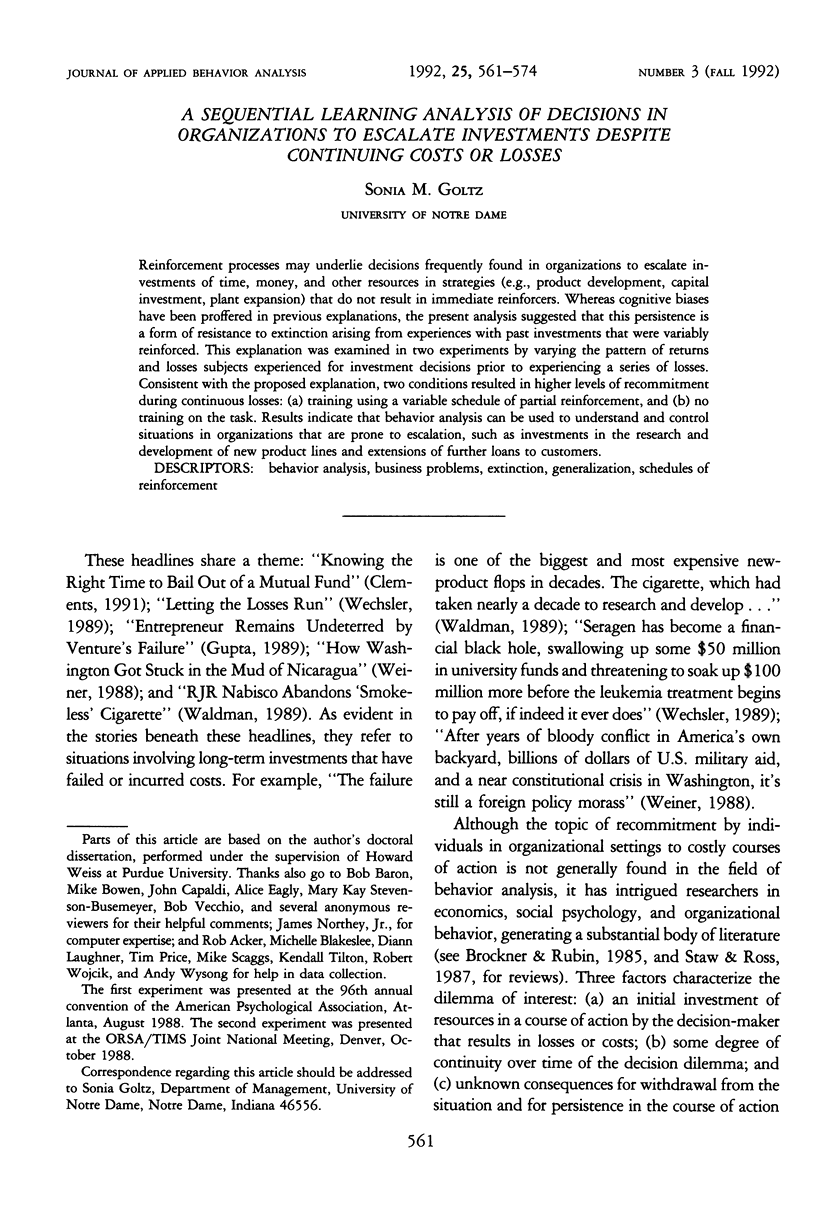
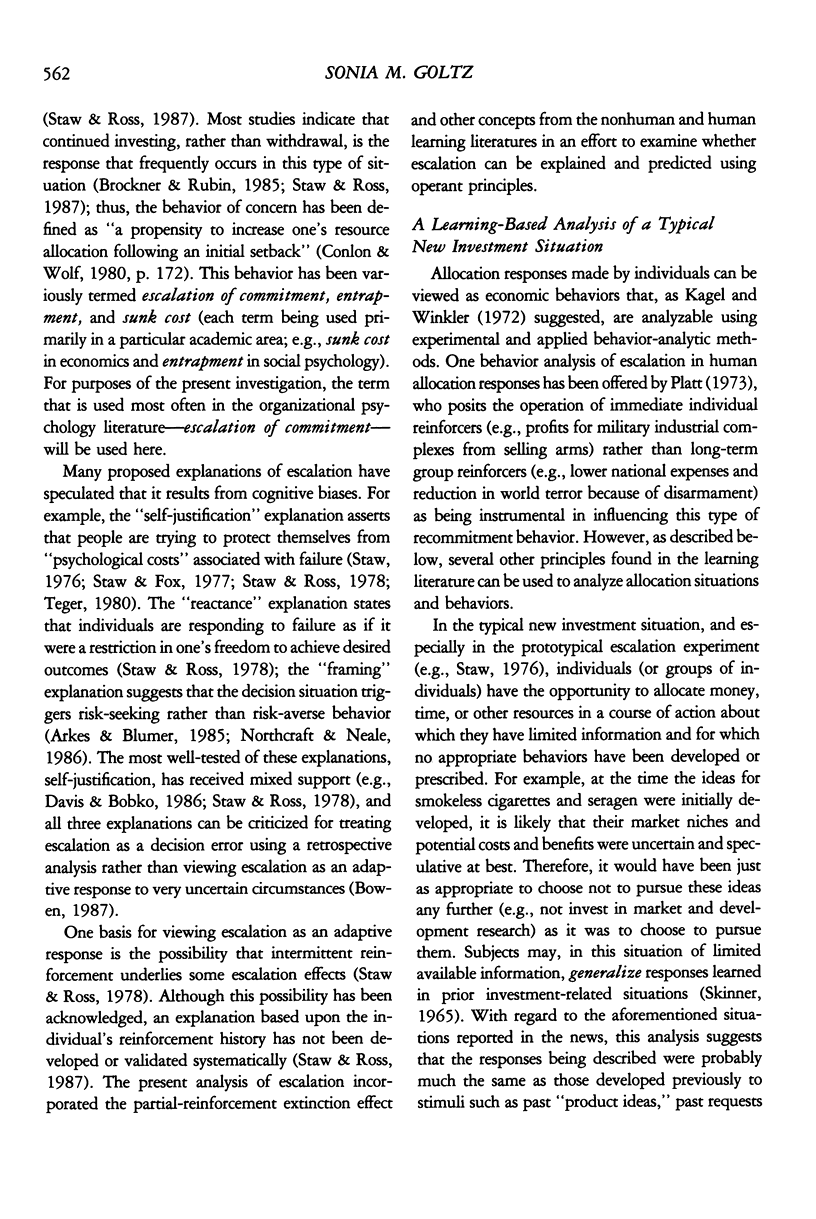
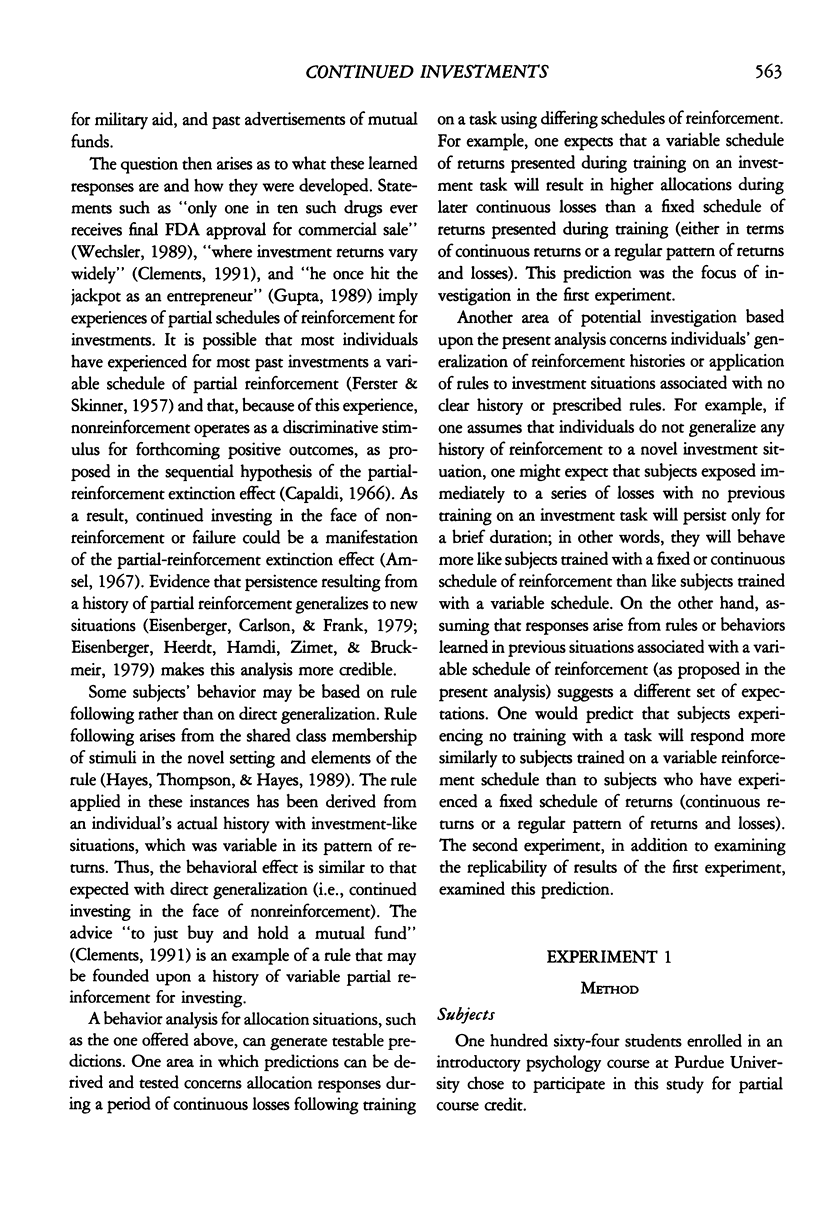
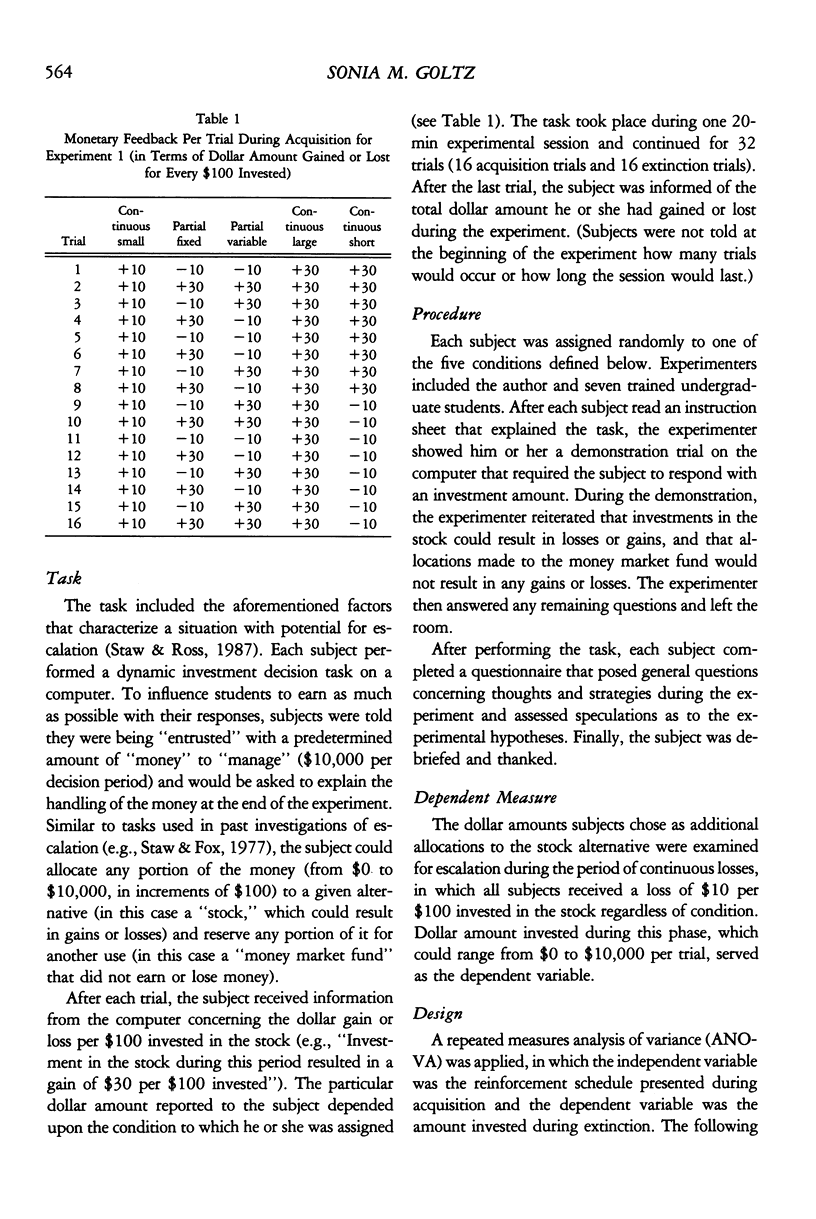
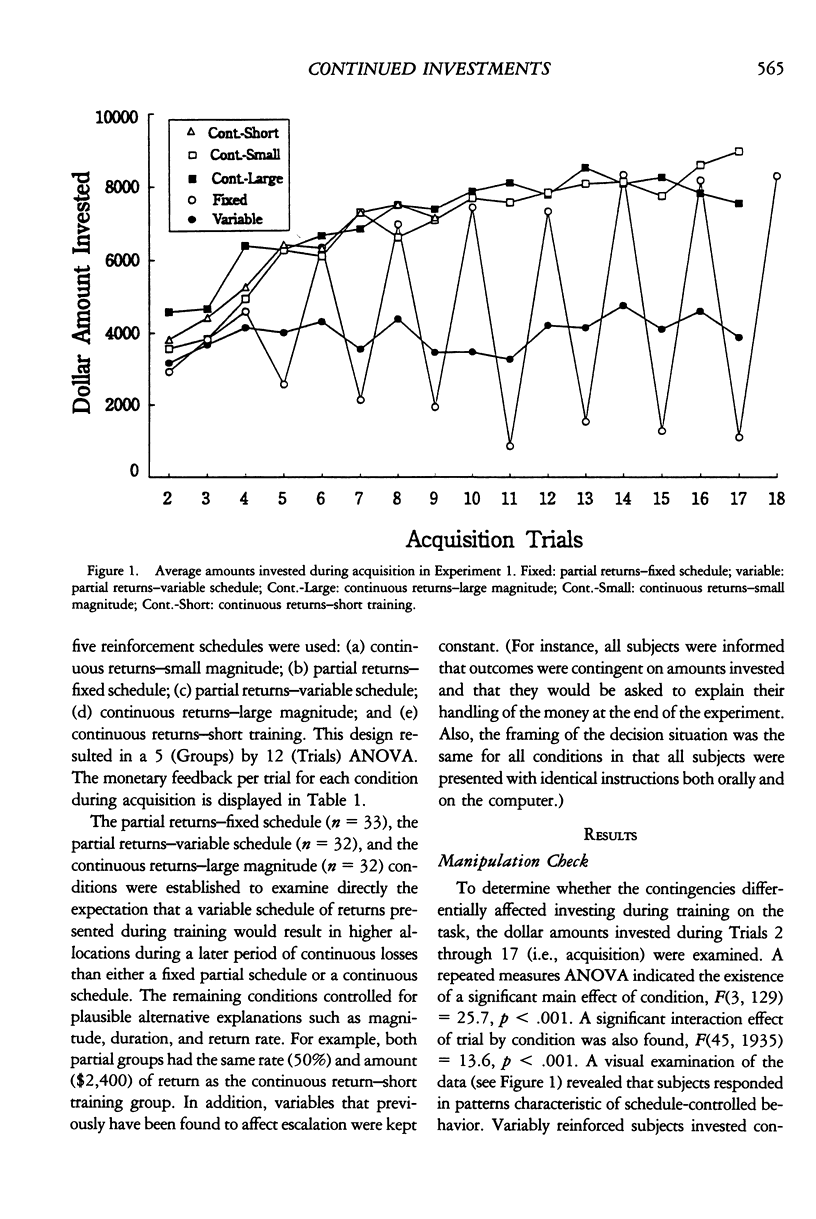
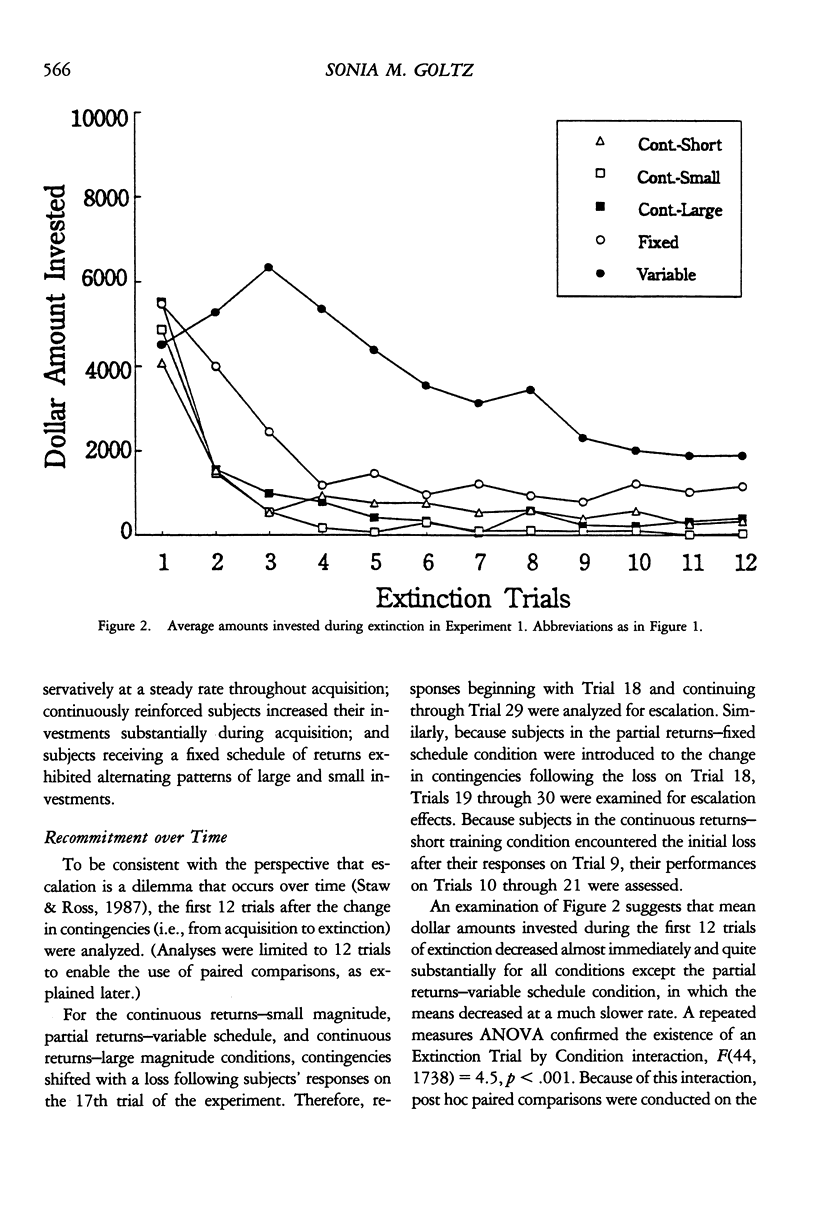
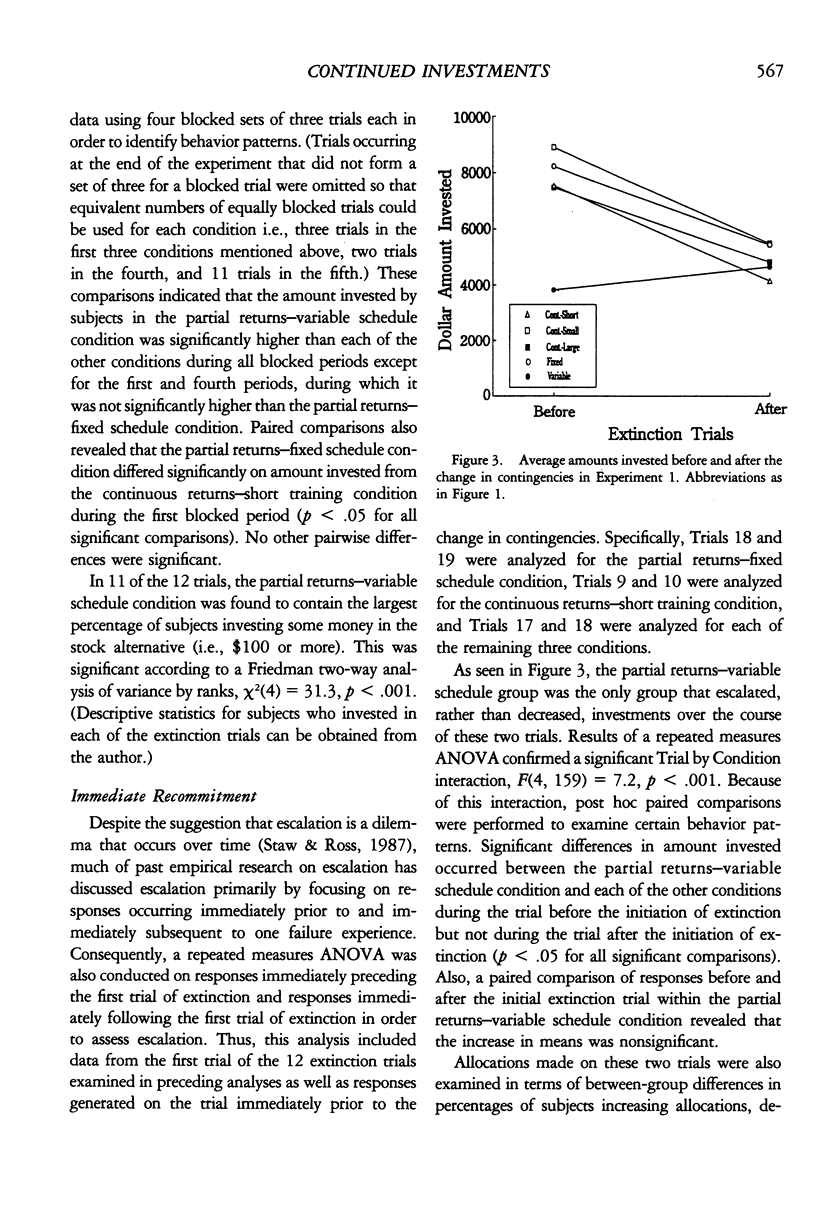
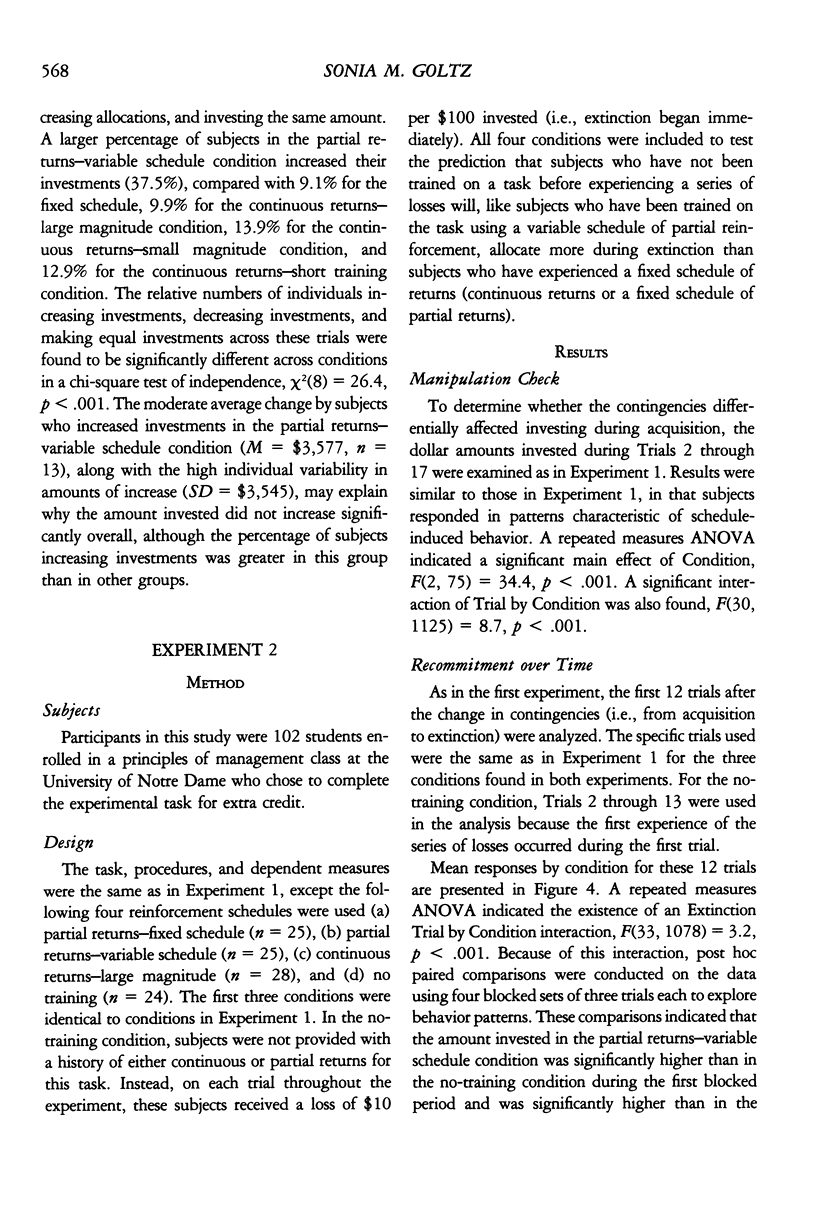
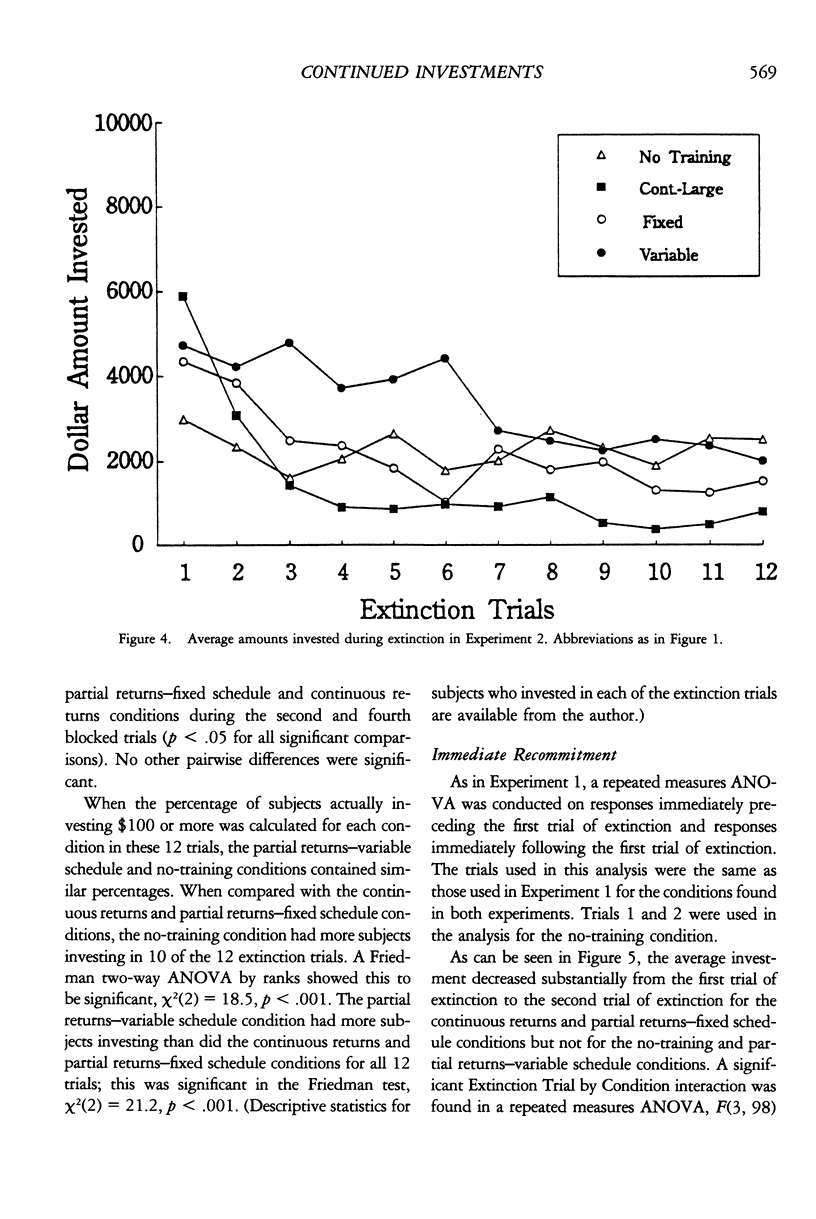
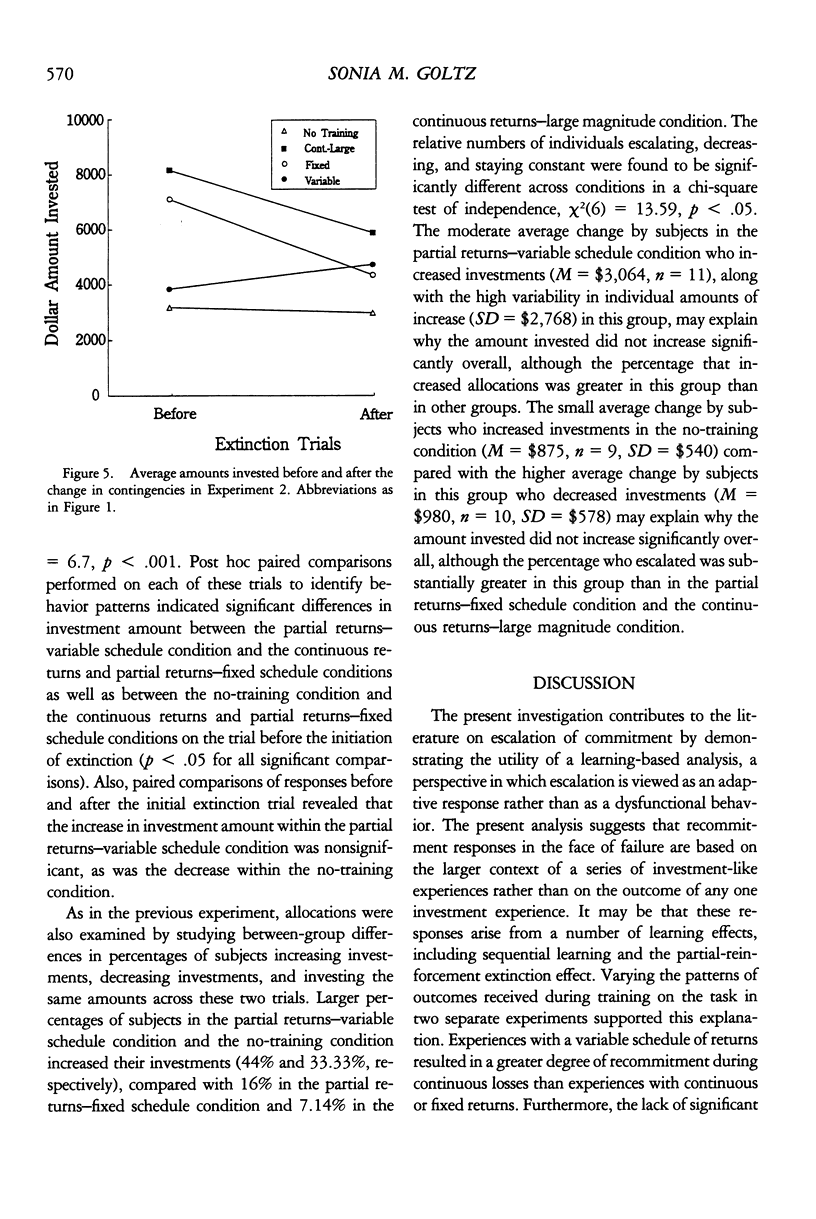
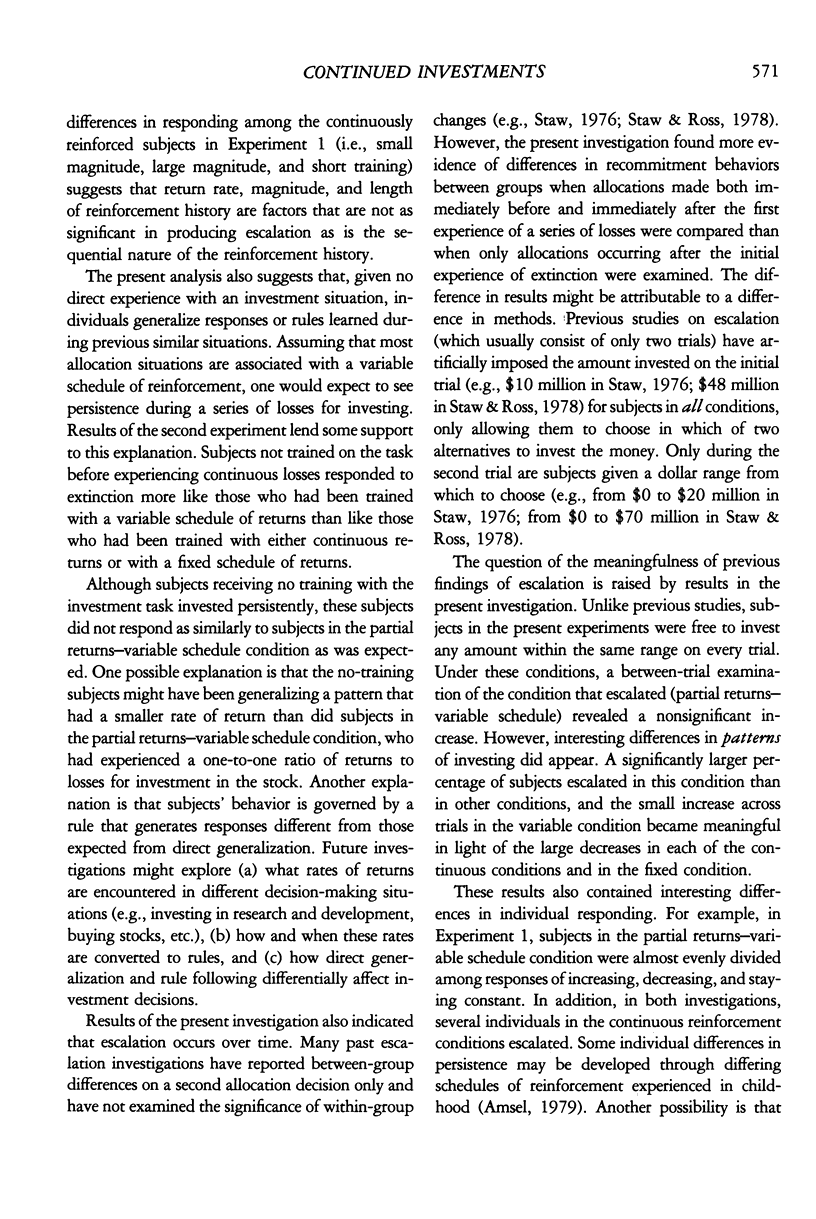
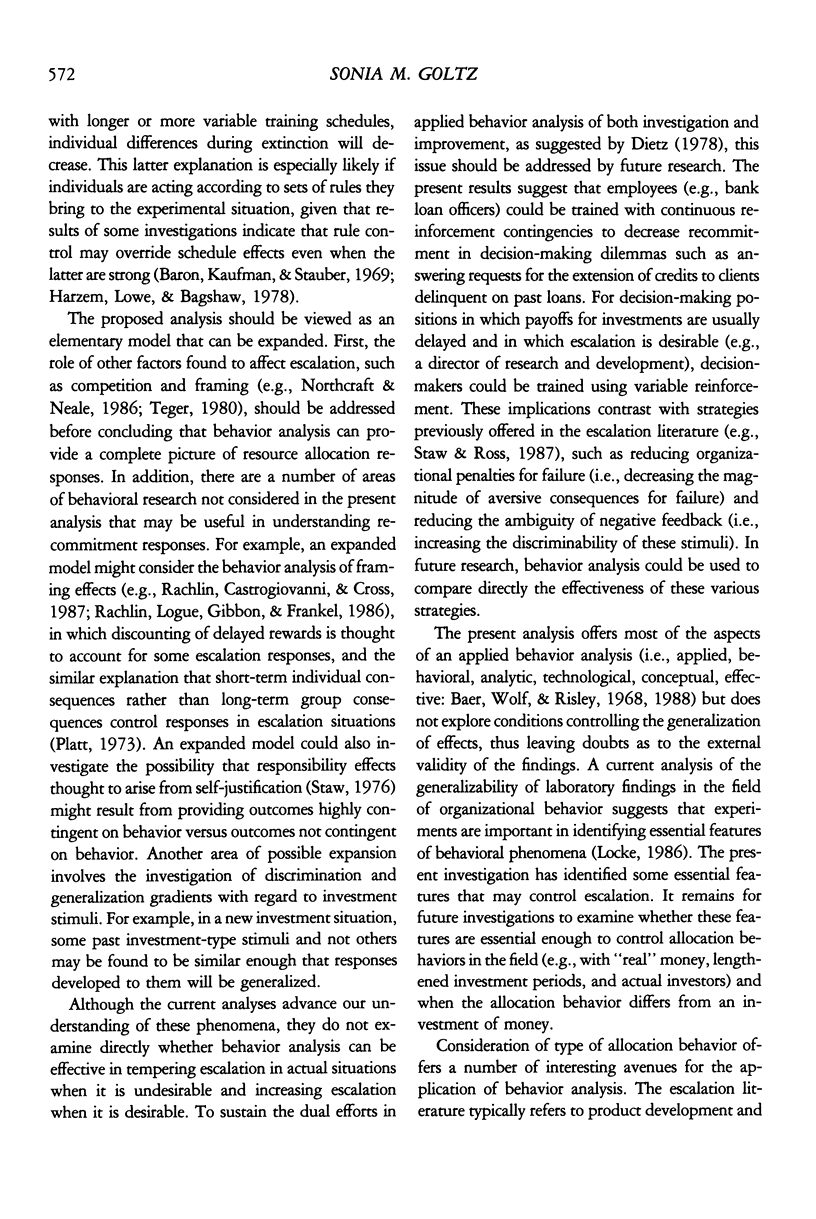
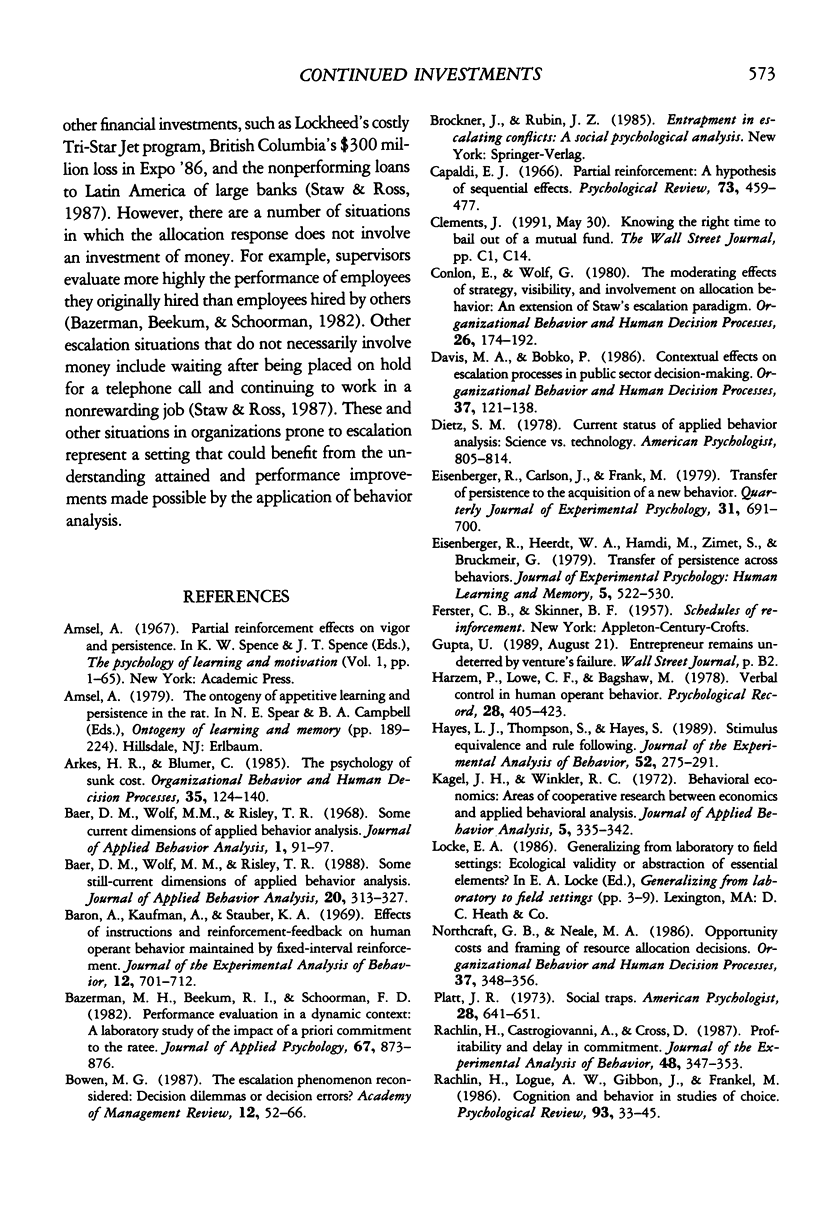
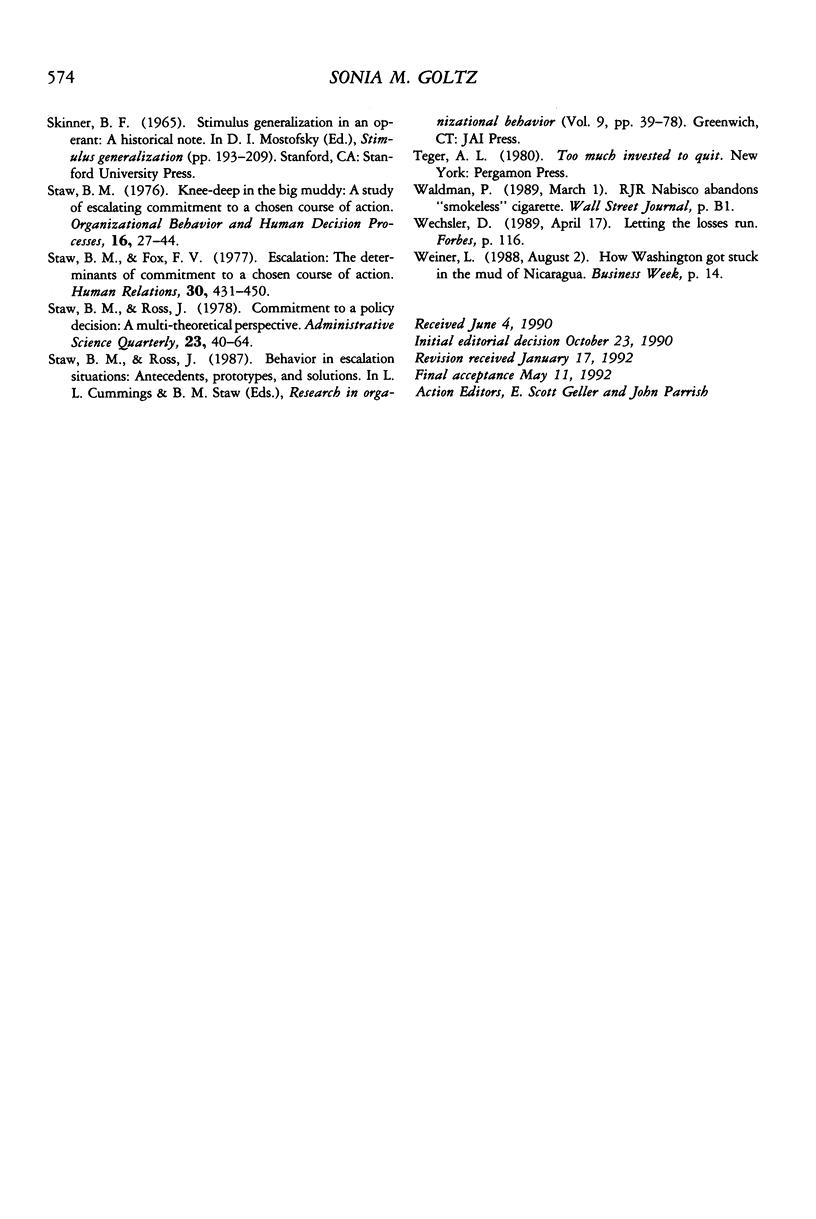
Selected References
These references are in PubMed. This may not be the complete list of references from this article.
- Baer D. M., Wolf M. M., Risley T. R. Some current dimensions of applied behavior analysis. J Appl Behav Anal. 1968 Spring;1(1):91–97. doi: 10.1901/jaba.1968.1-91. [DOI] [PMC free article] [PubMed] [Google Scholar]
- Baer D. M., Wolf M. M. Some still-current dimensions of applied behavior analysis. J Appl Behav Anal. 1987 Winter;20(4):313–327. doi: 10.1901/jaba.1987.20-313. [DOI] [PMC free article] [PubMed] [Google Scholar]
- Baron A., Kaufman A., Stauber K. A. Effects of instructions and reinforcement-feedback on human operant behavior maintained by fixed-interval reinforcement. J Exp Anal Behav. 1969 Sep;12(5):701–712. doi: 10.1901/jeab.1969.12-701. [DOI] [PMC free article] [PubMed] [Google Scholar]
- Capaldi E. J. Partial reinforcement: a hypothesis of sequential effects. Psychol Rev. 1966 Sep;73(5):459–477. doi: 10.1037/h0023684. [DOI] [PubMed] [Google Scholar]
- Eisenberger R., Heerdt W. A., Hamdi M., Zimet S., Bruckmeir G. Transfer of persistence across behaviors. J Exp Psychol Hum Learn. 1979 Sep;5(5):522–530. [PubMed] [Google Scholar]
- Hayes L. J., Thompson S., Hayes S. C. Stimulus equivalence and rule following. J Exp Anal Behav. 1989 Nov;52(3):275–291. doi: 10.1901/jeab.1989.52-275. [DOI] [PMC free article] [PubMed] [Google Scholar]
- Kagel J. H., Winkler R. C. Behavioral economics: areas of cooperative research between economics and applied behavioral analysis. J Appl Behav Anal. 1972 Fall;5(3):335–342. doi: 10.1901/jaba.1972.5-335. [DOI] [PMC free article] [PubMed] [Google Scholar]
- Rachlin H., Castrogiovanni A., Cross D. Probability and delay in commitment. J Exp Anal Behav. 1987 Nov;48(3):347–353. doi: 10.1901/jeab.1987.48-347. [DOI] [PMC free article] [PubMed] [Google Scholar]


